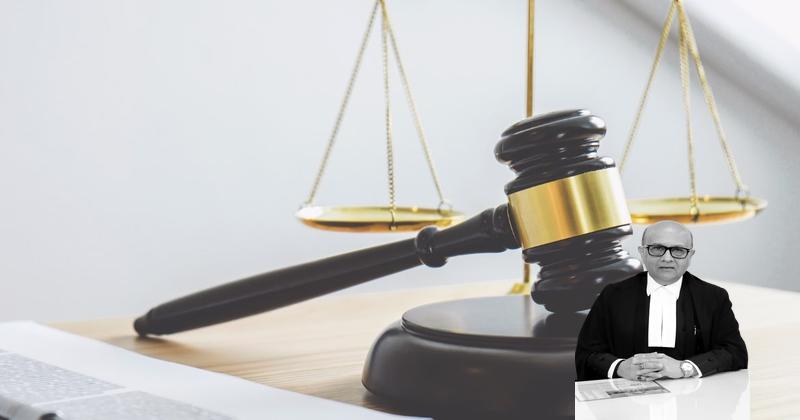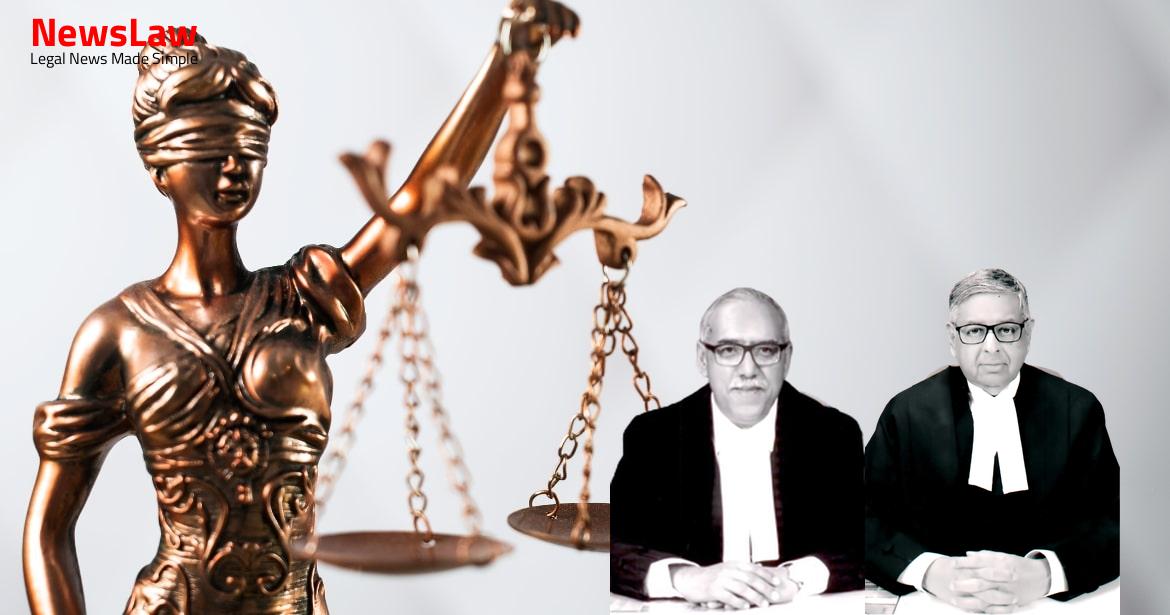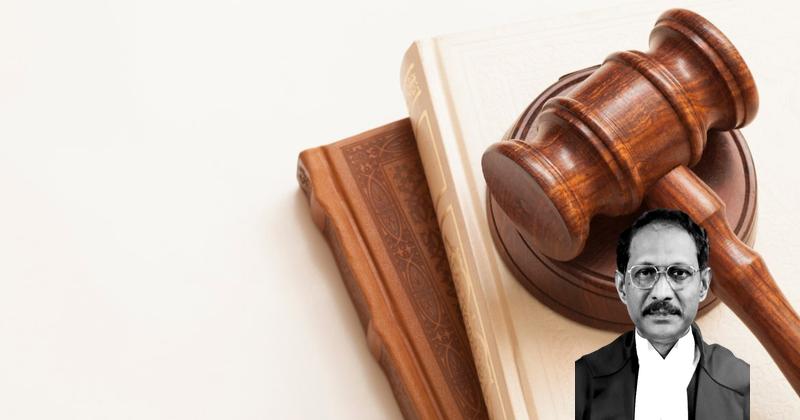The Court of Additional Sessions Judge, Rohini Courts, Delhi (for short “the Trial Court”) vide order dated 27.02.2008 found them guilty for offence punishable under Section 302 read with Section 34 IPC and, vide order dated 29.02.2008, sentenced them to imprisonment for life. Aggrieved by acquittal of Neeraj, State of Delhi has preferred Criminal Appeal No.576 of 2011 whereas, aggrieved by dismissal of his appeal, Santosh @ Bhure has filed Criminal Appeal No.575 of 2011. Raj Kumar (PW4), a tenant of the first floor, during investigation, stated that Santosh @ Bhure resided in that apartment with one Hari Om who had left a week prior to the incident, and on 11.09.2000, at about 9.00 p.m., he saw the deceased playing cards and having liquor with Santosh and Neeraj in that apartment. (iii) As per prosecution, two disclosure/ confessional statements were made by each of the two accused during police custody; the first, dated 23.09.2000, resulted in no Criminal Appeal No.575 of 2011 Etc. tenancy and the residence of accused Santosh @ Bhure on the second floor of House No.D-156, JJ Colony, Khyala; Criminal Appeal No.575 of 2011 Etc. recovery of dead body of Hari Shankar from the second floor of House No.D-156, JJ Colony, Khyala and its identification; v. specimen hand-writing and signature of accused Neeraj and sending of the letter, Ex.15PW/G and the specimen hand-writing and signature of the accused to the handwriting expert of FSL and its report; Criminal Appeal No.575 of 2011 Etc.
Also Read: https://newslaw.in/supreme-court/selection-and-appointment-of-judicial-officers-in-himachal-pradesh/
(iii) The testimony of PW4 proved that when he visited the apartment of Santosh @ Bhure on 11.09.2000, between noon and 1.00 p.m., to pay him money, Hari Shankar (the deceased) was noticed there alive and in an inebriated state. (ix) The testimonies of police witnesses PW28 and PW15 and the exhibited documents proved that the two accused had made two confessional disclosures. (x) The testimonies of PW15 and PW28 proved that specimen handwriting and signature of Neeraj was obtained and a memorandum to that effect was prepared and that the suicide letter, specimen handwriting and signature of accused Neeraj were sent to the Forensic Science Laboratory (FSL) for comparison/opinion. On strength of the above findings, the Trial Court concluded that the proven circumstances constituted a chain which conclusively indicated that the accused Santosh @ Bhure in the company of co- accused Neeraj committed the crime and to remove the evidence hid the dagger and the blood-stained clothes and further, to hoodwink the police, Neeraj wrote and planted a suicide letter in a pocket of the trouser worn by the deceased. Ram Babu Misra, held that the expert opinion with regard to the suicide letter being in the handwriting of Neeraj would have to be eschewed, inasmuch as the specimens of handwriting and signature of Neeraj were obtained with neither his consent nor permission/order of the Court. The High Court concluded that the above incriminating circumstances constituted a chain so far complete as to conclusively indicate that in all human probability it was Santosh and no one else who committed the crime, therefore, in absence of a proper explanation of the circumstances appearing against him, Santosh’s conviction and sentence was liable to be upheld.
In Criminal Appeal No.575 of 2011, on behalf of appellant Santosh @ Bhure, it was argued that, firstly, there is no documentary evidence that Santosh was tenant of the apartment; secondly, no motive for murder is proved; thirdly, presence of Santosh in that apartment at the relevant time is not proved; and, fourthly, when the police team visited the spot, a plate, glass, steel bowl, quarter bottle of whisky, packet of salted snacks mixtures were found, yet the FSL Report is silent whether fingerprints of the appellant was found on those articles, which suggests that someone else committed the crime.
The statement of Santosh @ Bhure, one of the two accused, made to the police in respect thereof is not admissible in evidence. saw the deceased there but could not notice Santosh @ Bhure there, rather, the deceased told him that Santosh @ Bhure was not at home. Per contra, on behalf of the State, it was argued that it is proved beyond doubt that the apartment where the body was found was in the tenancy of Santosh; that there was recovery of blood- stained clothes at the pointing out and on the basis of disclosure made by Santosh; the blood on the said clothes was of same group as on the clothes worn by the deceased at the time of his death; that Santosh, despite being tenant, gave no information to the police regarding the murder rather, remained absconding till 23.09.2000 even though the police had raided his native place on 20.09.2000; and there is no explanation from Santosh as to how dead body of the deceased was present in his apartment. Otherwise also, neither Article 20(3) of the Constitution of India nor Section 73 of the IEA, 1872 fetters the investigating agency’s powers to obtain specimen signature of an accused or a suspect during investigation. Thus, as it is proved that the suicide letter was recovered from a pocket of the trouser which the deceased was wearing at the time of his death, and there is recovery of knife/dagger at the instance of Neeraj, which, according to the doctor, could have caused injuries as were found on the body of the deceased, it stood proved beyond reasonable Criminal Appeal No.575 of 2011 Etc.
edged weapons; and, seventhly, the doctor who opined that recovered knife could have caused such injuries is not a scientific expert, specified in section 293 of the Code, therefore, in absence of production of that doctor as a witness, not much importance is to be attached to that report.
In respect of authorship of the suicide letter, it was submitted that, firstly, the FSL report is not admissible in evidence as rightly found by the High Court; and, secondly, there is no admissible evidence to prove that the writing in the suicide letter was of Neeraj. chain so far complete that there is no escape from the conclusion that within all human probability the crime was committed by the accused; the circumstances should be consistent only with the hypothesis regarding the guilt of the accused; and they must exclude every possible hypothesis except the one to be proved.
In addition to the above, while dealing with a criminal trial, a Court must not be oblivious of the most fundamental principle of criminal jurisprudence, which is, that the accused ‘must be’ and not merely ‘may be’ guilty before the Court proceeds to convict him. The accused is indeed entitled to have the benefit of one which is favourable to him.” Bearing in mind the aforesaid legal principles, we would have to examine — (i) whether the circumstances relied by the prosecution have been proved beyond reasonable doubt; (ii) whether those circumstances are of a definite tendency unerringly pointing towards the guilt of the accused; (iii) whether Criminal Appeal No.575 of 2011 Etc. In the instant case, the key circumstances on basis whereof the prosecution seeks to bring home the charge against the two accused are: (a) the apartment from where body of the deceased was recovered on 12.09.2000 stood in the tenancy and possession of Santosh @ Bhure; (b) the autopsy report confirmed homicidal death of the deceased as a result of infliction of multiple wounds from a sharp-edged weapon; (c) the spillage of blood on the floor of the apartment and on the cot from where the body was lifted confirmed that murder took place in that very apartment; Criminal Appeal No.575 of 2011 Etc. No doubt Santosh denied tenancy and claimed that there exists no documentary proof in respect thereof but as there could be an oral tenancy also, in our view, the finding returned by the courts below in respect thereof calls for no interference.
But, if the chain of circumstances is not established, mere failure of the accused to offer an explanation is not sufficient to hold him guilty. If the section were to be interpreted otherwise, it would lead to the very startling conclusion that in a murder case the burden lies on the accused to prove that he did not commit the murder because who could know better than he whether he did or did not. When a case is resting on circumstantial evidence, if the accused fails to offer a reasonable explanation in discharge of burden placed on him by virtue of Section 106 of the Evidence Act, such a failure may provide an additional link to the chain of circumstances. In a case governed by circumstantial evidence, if the chain of circumstances which is required to be established by the prosecution is not established, the failure of the accused to discharge the burden under Section 106 of the Evidence Act is not relevant at all.
However, it cannot be used as a link to complete the chain.” In the instant case, according to PW4, the deceased was seen alive in that apartment between noon and 1.00 p.m. What is interesting is that during investigation PW3 had disclosed to the police that he noticed Santosh @ Bhure leaving the building with a Gathri (a bag made of cloth) at about 4.00 p.m. Rather, from the deposition of PW3 an important circumstance emerges, which is, that the apartment from where the body was retrieved on 12.09.2000 was not found locked or shut. As per his testimony, on 11.09.2000, between noon and 1.00 p.m., when he visited the apartment of Santosh @ Bhure he found Hari Shankar (the deceased) present there in a drunken condition. The prosecution has also not proved that on 11.09.2000 or any time thereafter, till recovery of the body of the deceased, the two accused were seen in the vicinity of that apartment or building from where the dead body was retrieved on 12.09.2000. Even the theory of exclusive possession of Santosh over that apartment is dented by the statement of PW4 that till a week before the incident one Hari Ram used to live in that apartment with Santosh @ Bhure. As regards death of Hari Shanker being homicidal and a consequence of multiple injuries caused by a sharp edged weapon, no serious challenge is there to the findings returned by the courts below. However, in addition to blood or blood-stained cot/ linen there were whisky bottle, empty packets/ pouches of salted snacks, cigarette butts, etc. Indisputably, except the FSL report there is no admissible evidence that the suicide letter is in the writing of Neeraj. Per contra, on behalf of defence, it is contended – (a) that even if it is assumed that the expert report was admissible, it cannot be the sole basis to conclude that the suicide letter was written by Santosh, rather, the Court must look at all the evidences to find out whether the proven facts and circumstances support the said issue; and (b) the Trial Court ought to have undertaken an exercise to find for itself whether the writing on the suicide letter matched with that of Neeraj and whether the proven facts and circumstances support the proposition that the suicide letter was indeed written by Neeraj and no one else. As far as admissibility of the confessional statement of the two accused in respect of suicide letter being written by Neeraj is concerned, the same being made by an accused before the police would be hit not only by Sections 25 and 26 of the IEA, 1872 but also by Section 162 of the Code because only that much of the disclosure/confessional statement is admissible as relates distinctly to the fact discovered. As regards admissibility of the FSL report, the High Court held it inadmissible for being based on comparison of specimens forcibly obtained during investigation by the investigating agency.
As regards the Court which can give a direction to the accused to provide specimens of handwriting and signature and the scope as well as purpose of the second paragraph of section 73 of the IEA, 1872, it was held: “20. The direction is therefore required to be given for the purpose of “ enabling the court to compare” and not for the purpose of enabling an investigating or a prosecuting agency to obtain and produce as evidence in the case the specimen writings for their ultimate comparison with the disputed writings. Therefore, in our opinion the court which can issue a direction to the person to give his specimen writing can either by the court holding the enquiry under the Code of Criminal Procedure or the court trying the accused person with a view to enable it to compare the specimen writings with the writings alleged to have been written by Criminal Appeal No.575 of 2011 Etc. The words “ any person present in the court” in Section 73 has a reference only to such persons who are parties to a cause pending before the court and in a given case may even include the witnesses in the said cause but where there is no cause pending before the court for its determination, the question of obtaining for the purposes of comparison of the handwriting of a person may not arise at all and therefore, the provisions of Section 73 of the Evidence Act would have no application. As to what procedure an investigating agency has to follow during investigation for obtaining specimen handwriting or signature of an accused, there existed no specific provision in the Code, at least none shown to us, prior to insertion of Section 311-A in the Code by Act No.25 of 2005 w.e.f. No doubt, by Act No.25 of 2005, with effect from 23.06.2006, Section 311-A has been inserted in the Code thereby empowering a Magistrate of the First Class to direct any person including an accused to give specimen signature or handwriting for the purposes of investigation but this provision would have no bearing on this case as it came into effect in the year 2006, whereas the instant case is of the year 2000. As the provisions of Section 311-A of the Code prescribing the procedure for obtaining specimen signature/ handwriting were inserted in the Code much after completion of investigation in this case, it would have no material bearing on this case. In such a situation, as there existed no legal provision proscribing an investigating agency from obtaining specimens of handwriting/signature of a suspect or an accused, in our view, the investigating agency had the power to such collect material including specimen handwriting/ signature as to assist the prosecution to introduce a relevant fact or corroborate any piece of evidence on a relevant fact/fact in issue. Now, we shall test another leg of the argument made on behalf of the defence to question the admissibility of the expert report, which is, that the specimen was obtained forcibly, therefore, its usage would infringe the fundamental right against self- incrimination enshrined in Article 20(3) of the Constitution of India. In other words, the mere fact of being in police custody at the time when the statement in question was made would not, by itself, as a proposition of law, lend itself to the inference that the accused was compelled to make the statement, though that fact, in conjunction with other circumstances disclosed in evidence in a particular case, would be a relevant consideration in an enquiry whether or not the Criminal Appeal No.575 of 2011 Etc. Case law has gone beyond this strict literal interpretation of the expression which may now bear a wider meaning, namely, bearing testimony in court or out of court by a person accused of an offence, orally or in writing. We agree therefore with the conclusion reached by the majority of the Bench that there is no infringement of Article 20(3) of the Constitution by compelling an accused person to give his specimen handwriting or signature; or impressions of his fingers, palm or foot to the investigating officer or under orders of a court for the purpose of comparison under the provisions of Section 73 of the Indian Evidence Act; though we have not been able to agree with the view of our learned Brethren that “to be a witness” in Article 20(3) should be equated with the imparting of personal knowledge or that an accused does not become a witness when he produces some document not in his own handwriting even though it may tend to prove facts in issue or relevant facts against him.” Hence, reliance on the contents of compelled testimony comes within the prohibition of Article 20(3) but its use for the purpose of identification or corroboration with facts already known to the investigators is not barred.” (Emphasis supplied) 56.
Navjot Sandhu.”
A conspectus of the decisions above would indicate that since specimen signatures and handwriting samples are not incriminating by themselves as they are to be used for the purpose of identification of the handwriting on a material with which the investigators are already acquainted with, compulsorily obtaining such specimens would not infringe the rule enshrined against self-incrimination in Article 20(3) of the Constitution of India.
We therefore hold that the specimen signature/handwriting of Neeraj obtained by the investigating agency could not have been discarded merely because of allegations that they were forcibly obtained during investigation without permission of the Magistrate/ Court. As we have already found that such objection was unsustainable therefore, once genuineness of the specimens was not disputed, the specimens were available for comparison and were rightfully used for obtaining expert report. However, the mere fact that the expert report was admissible in evidence does not mean that it should on its own form the basis of conclusion that the suicide letter was written by Neeraj.
The expert has concluded that there is no divergence observed between the questioned and specimen writings and the aforesaid similarities in the writing habits are significant and sufficient and cannot be attributed to accidental coincidence and when considered collectively, they lead the expert to the opinion that both the writings are in the hand of the same person. It is well settled that evidence regarding the identity of the author of any document can be tendered ( i ) by examining the person who is conversant and familiar with the handwriting of such person or ( ii ) through the testimony of an expert who is qualified and competent to make a comparison of the disputed writing and the admitted writing on a scientific basis and ( iii ) by the court comparing the disputed document with the admitted one. It is indeed true that by nature and habit, over a period of time, each individual develops certain traits which give a distinct character to his writings making it possible to identify the author but it must at the same time be realised that since handwriting experts are generally engaged by one of the contesting parties they, consciously or unconsciously, tend to lean in favour of an opinion which is helpful to the party engaging him.
True it is, there is no rule of law that the evidence of a handwriting expert cannot be acted upon unless substantially corroborated but courts have been slow in placing implicit reliance on such opinion evidence, without more, because of the imperfect nature of the science of identification of handwriting and its accepted fallibility. One such means open to the Court is to apply its own observation to the admitted or proved writings and to compare them with the disputed one, not to become a handwriting expert but to verify the premises of the expert in the one case and to appraise the value of the opinion in the other case. This is not to say that the court must play the role of an expert but to say that the court may accept the fact proved only when it has satisfied itself on its own observation that it is safe to accept the opinion whether of the expert or other witness. In the instant case, with regard to authorship of the suicide letter, the Trial Court though returned a finding in favour of the prosecution by relying solely on the expert report but did not record its satisfaction having regard to its own observations with respect to the admitted and disputed writings. But, in the instant case, there appears no such exercise undertaken by the Trial Court. Seen in that light, barring the expert report, there exists no internal or external evidence to lend assurance to the prosecution story that the suicide letter was written by Neeraj.
Case Title: SANTOSH @ BHURE Vs. STATE(G.N.C.T) OF DELHI (2023 INSC 443)
Case Number: Crl.A. No.-000575-000575 / 2011



